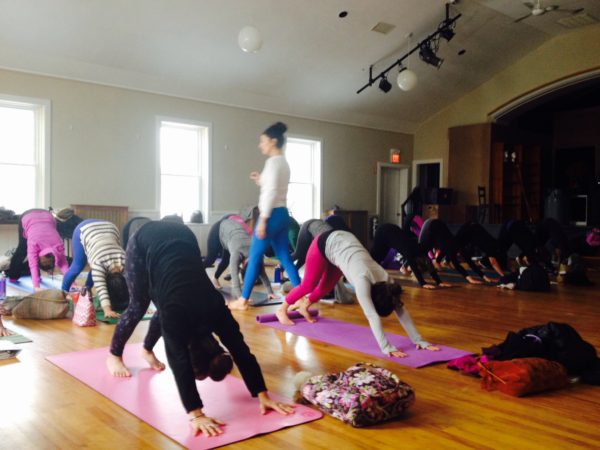
I was reading a book on branding today and in it, the author was talking about messaging that companies use to try to communicate their mission and value to customers. The author was talking about the importance of having the message be clear, so it’s easy for the customer to know if the product or service would be helpful for them.
It got me thinking about teaching yoga and how important it is for teachers to make our message clear. Are we communicating in a way that assumes our students know what we’re talking about? Are we assuming that the students in class are experienced (maybe more than we think they are) and therefore are using phrases and cues (or leaving things out) because we assume they’ll know what to do?
This gets to the idea of using “inside language” when we teach and how important it is to do just the opposite: teach in a way that everyone can understand. Why? Because then what you’re teaching will have the greatest applicability to everyone in the room! As soon as we leave things out or use phrases and cues that only experienced people will understand, we cut off several of our students from fully experiencing the poses. Further, even students who DO know what we’re talking about may miss out because they’re just overwhelmed and stressed out with life. Do you know how that feels when you’re on the mat? You’re barely able to focus and all of a sudden, the teacher is using phrases and maybe even a complicated sequence on top of it and all you want to do is run screaming from the room.
Teachers: We must put ourselves in the minds of our students rather than teaching from a place that comes from US and OUR EXPERIENCE. Until we start doing this, we’re only teaching from our own experience and often, our ego, and we’re missing out on a real chance to connect with our students. Now, sometimes this happens and it’s not our intention to cut ourselves off from our students. We just don’t know any better! Maybe we don’t really understand the cues ourselves. Maybe we heard cues from teachers we admired and just started using them without actually knowing what they meant. And, my favorite one is this: “That’s the way I was taught.” UGH! Can we make a pact as teachers to avoid saying that? Don’t you see how that just defers our responsibility, our power as our our teacher, and just GIVES it to someone else!
I get it. We all learned from someone else. And yes, maybe that WAS the way you were taught. But at some point, or better yet, at WHAT point, does it become YOUR responsibility to own what you’re saying, teaching and doing? After a month of teaching? A year? Ten years?
I don’t know the answer. I’m sure it’s different for everyone. All I’m suggesting is that you take the time to understand what you’re saying, know the WHY behind what you’re saying, speak in a way that’s clear and simple for ANYONE to understand and if you don’t know the WHY behind what you’re saying, then by god, don’t say it.
I’m going to go into this much more in my next podcast episode which I’ll record this week so it’ll be out next week. For now, you can catch other episodes of the podcast here.Â
I recorded a Facebook live as a preview of the podcast topic too. You can catch that in my anatomy workgroup by joining here.Â
What do you think? Let me know by commenting below.
Thanks for reading!
